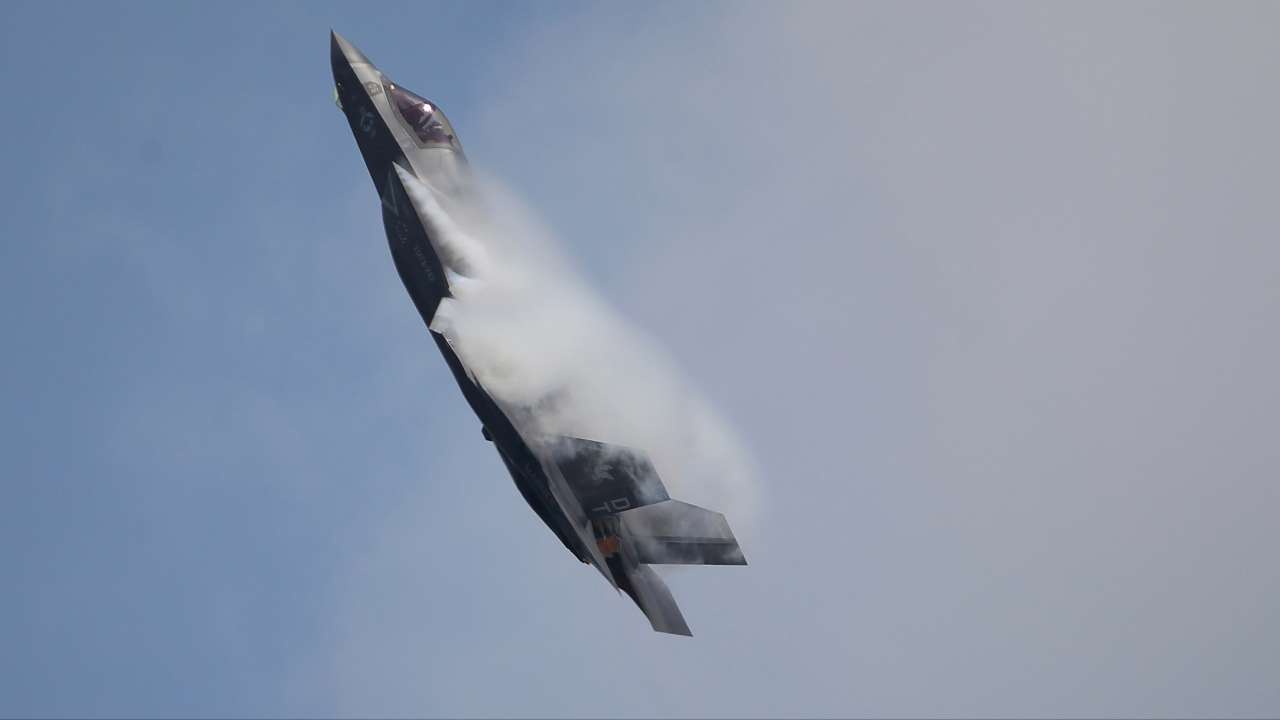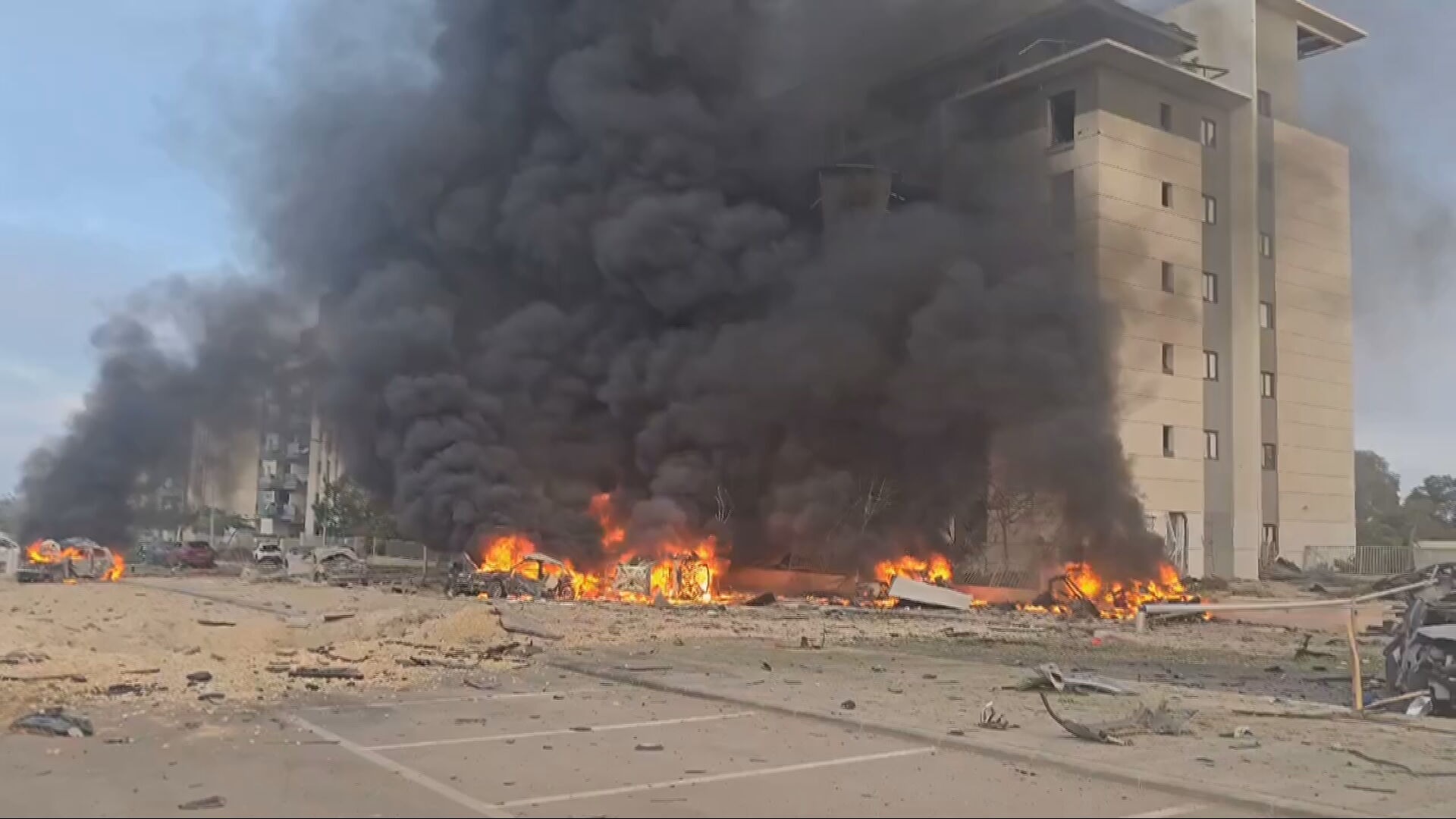A US military pilot dropped 600 metres from a plane, landed in a family’s garden, and it all played out in a bizarre 911 call.
The four-minute recording captures the strange incident for the three unidentified people involved: a North Charleston resident calmly explaining a pilot parachuted into his garden, the pilot who doesn’t know where his F-35 jet is, and a puzzled call handler trying to make sense of it all.
Mid air, the pilot’s engine failed, so he ejected himself and parachuted down into South Carolina family’s home.
“We got a pilot in the house, and I guess he landed in my backyard, and we’re trying to see if we could get an ambulance to the house, please,” the resident said.
The pilot, who said he was 47, reported feeling “OK” and had only “hurt his back” after falling what he estimated was 2,000 feet.
Recording of the 911 call after the pilot fell to the ground
“Ma’am, a military jet crashed. I’m the pilot. We need to get rescue rolling,” the pilot was recorded saying on the 911 call.
“I’m not sure where the airplane is. It would have crash landed somewhere. I ejected,” he added.
Later in the call, he made another plea for medical help.
“Ma’am, I’m a pilot in a military aircraft, and I ejected. So I just rode a parachute down to the ground. Can you please send an ambulance?” the pilot said.
The Marines have described the pilot as an experienced aviator with decades of experience in the cockpit.
The F-35 crashed Sunday after a malfunction prompted the pilot to eject over Charleston and land in the residential backyard not far from Charleston International Airport.
The fighter jet, which the Marine Corps said was at an altitude of only about 300 metres, kept flying for 60 miles until it crashed in a rural area near Indiantown.
It took more than a day to locate the wreckage.
In a separate eight-minute dispatch call released Thursday to the AP, an unidentified official tried explaining that they had “a pilot with his parachute” but no information about what happened to his plane or word of a crash.
He said “the pilot lost sight of it on his way down due to the weather.”
The official also recalled hearing a “rather loud noise” about 25 minutes prior that “sounded something like a tornado, possibly a plane.”
The Marine Corps said on Thursday that a feature on fighter jets, intended to protect pilots in emergencies, could explain how the F-35 managed to stay in the air for so long.
They said that while it was unclear why the jet kept flying, flight control software would have worked to keep it steady if there were no longer a pilot’s hands on the controls.
Other questions about the crash remained, notably why the plane wasn’t tracked as it continued flying over South Carolina and how it could take more than a day to find a massive fighter jet that had flown over populated, although rural, areas.
The Marines said features that erase a jet’s secure communications in case of an ejection — a feature designed to protect both the pilot’s location and the plane’s classified systems — may also have complicated efforts to find it.
“Normally, aircraft are tracked via radar and transponder codes,” the Marines said. “Upon pilot ejection, the aircraft is designed to erase (or ‘zeroize’) all secure communication.”
The plane should have kept broadcasting an identifier on an open channel to identify itself as friend or foe.
But even on an unclassified communications channel, air traffic control may not have been able to pick up the signal depending on how powerful its radar was, the weather, how high the plane was flying and the terrain, the Marines said.
They said thunderstorms and low cloud ceilings further hampered the search for the plane.
“When coupled with the F-35’s stealth capabilities, tracking the jet had to be done through non-traditional means,” the service said in its statement.
The incident is still under investigation and results from an official review board could take months.
However, the Marines said the feature that kept the plane flying may not only have saved the life of the pilot but of others on the ground.
“The good news is it appeared to work as advertised. The other bit of silver lining in this case is that through the F-35 flying away it avoided crashing into a densely populated area surrounding the airport, and fortunately crashed into an empty field and forested area,” the statement said.
Follow STV News on WhatsApp
Scan the QR code on your mobile device for all the latest news from around the country
























